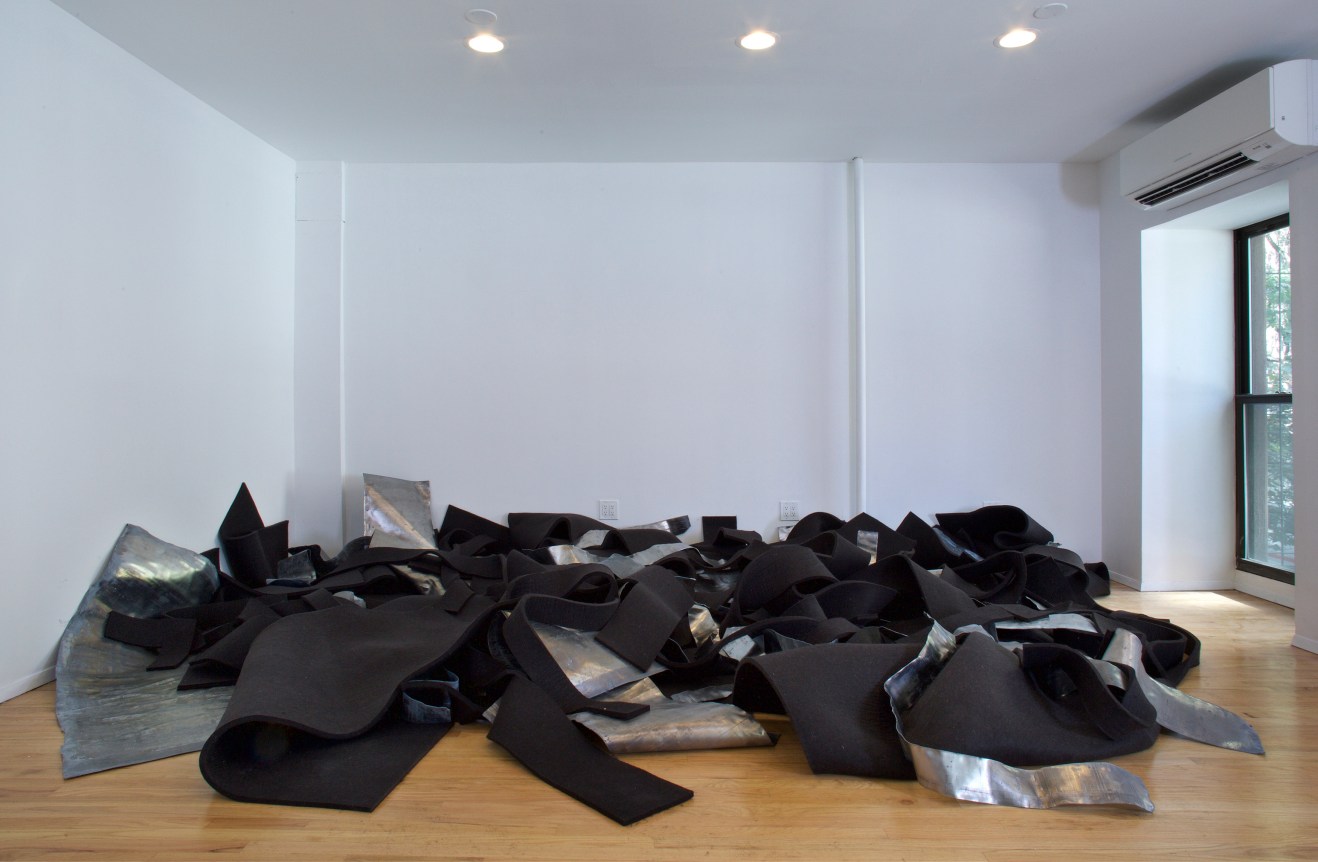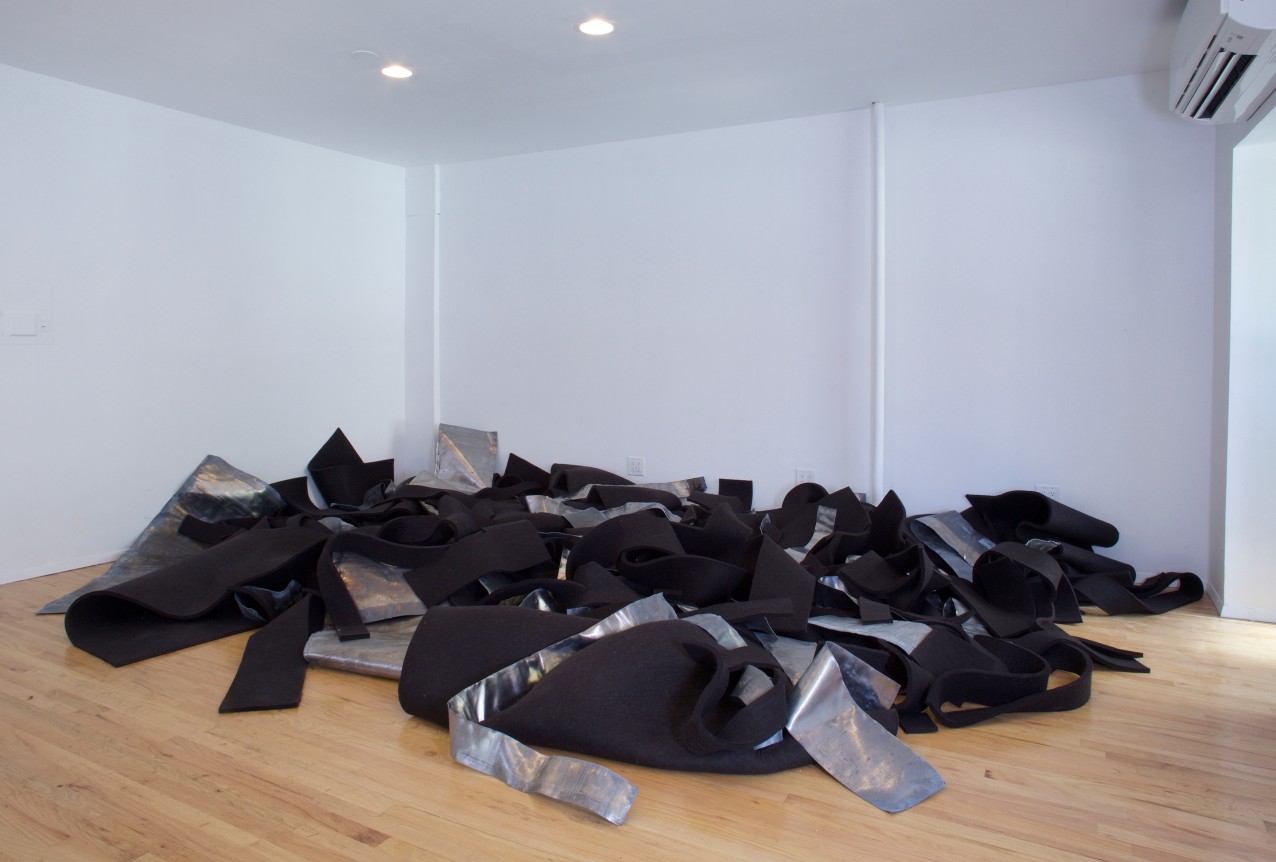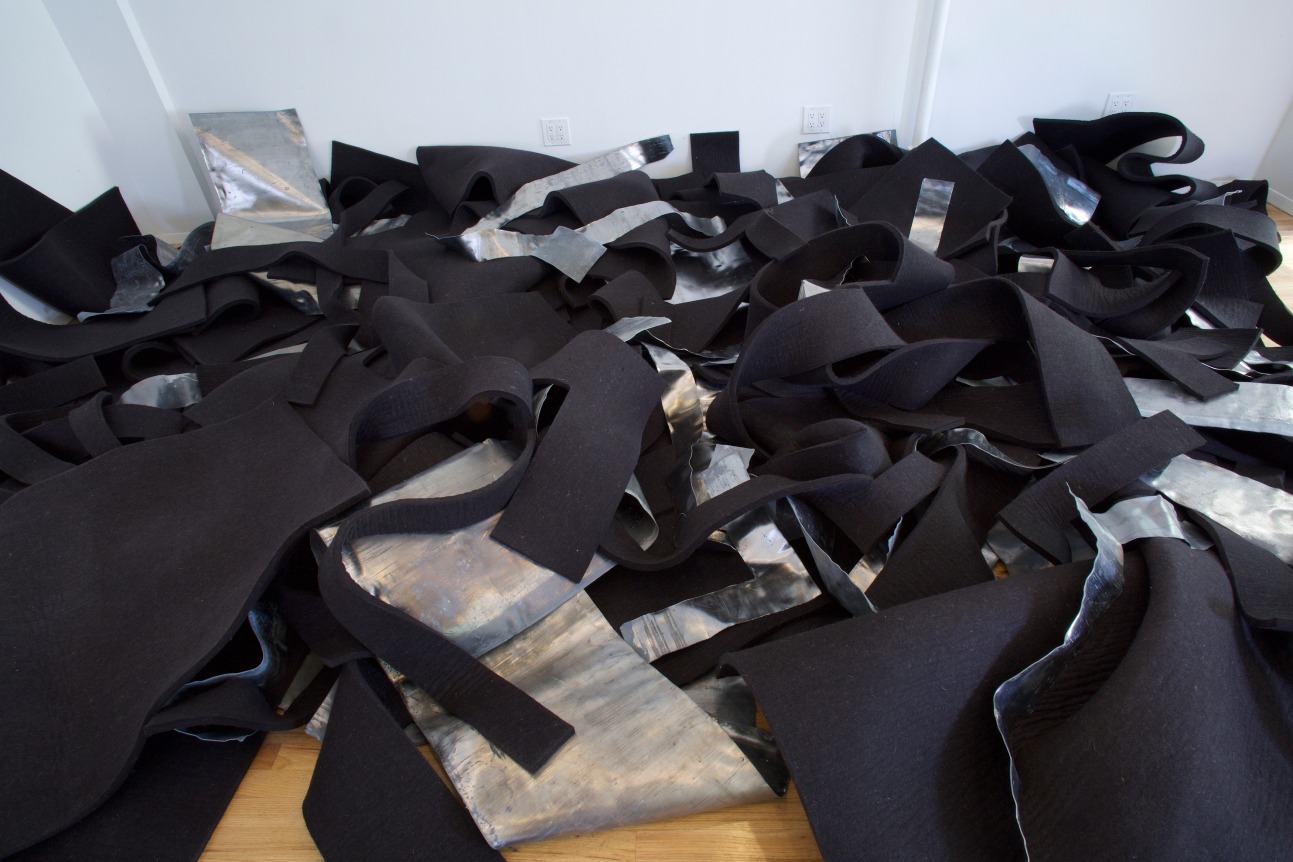For Robert Morris’ first show at Castelli Gallery in 1967 he created 16 pieces from plywood. Morris came to the gallery each day and recombined the shapes in order to change the way the full works were installed. These works are called the “permutation pieces.”
In March of 1967 Morris created his first Felt piece in Aspen. He first exhibited his Felt works in 1968, at Castelli, with an idea of considering the consequences of gravity and other forces that cause shapes to change from moment to moment. Indeterminacy—the idea that nothing is fixed and determined—became a central idea of Morris’ work, and his approach developed alongside the works he created in subsequent years.
In 1969 he conceived four individual works that, once installed together in the double exhibition at Castelli Gallery and Castelli Warehouse, combined to create a larger experience anchored in the idea of indeterminacy, in which much is left to casualty and accident. One of these works is Threadwaste, made of industrial materials, metal, and mirrors. Rather than having set dimensions, Threadwaste occupies the space it is given. After the piece was installed it was acquired by Philip Johnson, who gave it to The Museum of Modern Art. In the back gallery of this same exhibit was Lead and Felt, made of individual pieces of lead and Felt that had each been cut into an “L” shape. Like Threadwaste it occupies a certain space, rather than forcing its own predetermined dimensions onto the space.
Continuous Project Altered Daily, 1969, is the furthest extreme of these ideas. At the time of this work’s exhibition at Castelli Warehouse the gallery was kept open to the public for two hours per day, and visitors could see Robert Morris creating the artwork. Morris kept a daily diary at home of what he had done and where the work seemed to be heading. At some point he brought tables, then dirt, into the gallery. He questioned everything. After a few days he realized it was a good idea to take photos of the work at the end of every day, in order to see where he had left off. The next day a photographer came to take a photo, and on the day after that Morris hung the photo on the wall of the gallery as a reference point. On the last day of the show he disassembled everything and used a tape recorder to register the sounds of the disassembly.
In the back room of the same exhibit at Castelli Warehouse in 1969 was Untitled (Scatter Piece), made from 100 pieces of six kinds of metal, each cut into a different shape; and 100 pieces of Felt, each cut to match the shape of one of the metal pieces. There is an idea of intention behind the construction, but we’re left with a question mark. Untitled (Scatter Piece), like many of Morris’ other works that deal with indeterminacy, has no dimension and instead occupies a given space. It can be exhibited in a small space as well as a gigantic space. This work was later lost in storage, as was Lead and Felt. Mr. Morris remade both works in 2010. Untitled (Scatter Piece) was sold to the Art Institute of Chicago, and this is the first time Castelli is showing Lead and Felt, now concentrated within a smaller space.



